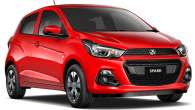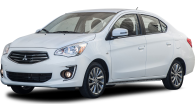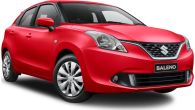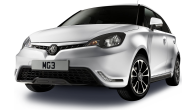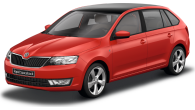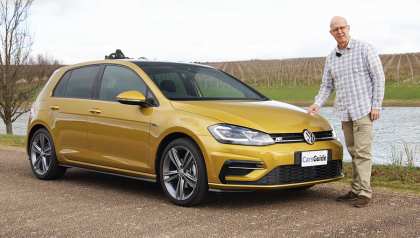Hyundai claims its Ulsan car production plant is the world’s largest. Located 300km south east of South Korea’s capital, Seoul, this monstrous automotive sausage machine spits out a new set of wheels every 10 seconds. Yes, one car every 10 seconds. You can't even make Big Macs that fast.
I first visited the main Ulsan factory in 1988, and a contemporary OH&S rep would have collapsed in shock. Even then, it felt close to medieval; hot, loud, dirty, and frightening. The Excels flying off the end of the line were unsurprisingly ordinary.
But a second visit, in 1995, was a revelation. The clinically clean shop floor was full of quietly efficient robots, producing cars that were already giving the established players something to think about in terms of design and build quality.
Then a third tour (oh yes, I know how to have fun at work), in 2012, revealed a showcase of modern manufacturing technology. Hyundai’s long-held ambition to be the world’s largest and most successful carmaker was clearly in the process of being realised.
.jpg)
Which brings us to the recently released third generation i30, Australian examples of which are built in Ulsan. The new model is already fighting toe-to-toe with the Toyota Corollas, Mazda3s and VW Golfs of this world, setting a course for global domination in the process.
The i30 Premium sits at the top of a five-model range. Does it have what it takes to knock over the big guns, or will Hyundai’s New World Order have to wait?
Hyundai I30 2017: Premium
| Engine Type | Diesel Turbo 4, 1.6L |
|---|---|
| Fuel Type | Diesel |
| Fuel Efficiency | 4.7L/100km (combined) |
| Seating | 5 |
| Price From | $17,050 - $21,890 |
| Safety Rating |
|
Is there anything interesting about its design?
8 / 10
One of Hyundai Motor Group’s smartest ever moves was head-hunting its current chief designer (and Kia president) Peter Schreyer from Volkswagen in 2006.
His influence has been profound, helping Hyundai leap to the upper echelon when it comes to crisp design and restrained styling.
Schreyer calls the brand’s overarching exterior theme ‘Fluidic Sculpture’, and on the i30, the transition between long, confident lines and softer curves, within a classic hatch profile, is subtle and carefully controlled. It's already making the previous iteration look tired and dowdy.

Sharply raked LED headlights, with a vertical strip of LED daytime running lights below, link the new i30 to its predecessors, while a new ‘cascading grille’ (complete with chrome surround) aligns it with other models in the current range.
There’s more than a whiff of Golf around the rear-end - from the distinctive shape of the tail-light cluster to the broad C-pillar. A swap of the Hyundai ‘lazy H’ badge for a VW roundel wouldn’t cause a seismic shock.
.jpg)
Inside, the i30 Premium lives up to its name, with a neatly composed dash and console layout, wrapped with (mainly) soft-touch materials. The look wouldn’t be out of place in a car costing half as much again.
.jpg)
An 8.0-inch colour multimedia touchscreen stands proud of a gently sloping split-level dash, with ventilation controls confined to a separate pod lower down.
The ‘leather-appointed’ seats look great, with our test example moving away from the dour and predictable grey colour palette applied to so many mass-market hatches. Sure, light trim colours aren’t the most practical, but Hyundai has hedged its bets with hard-wearing, dark materials applied to more vulnerable scuff panels on the doors and seat bases.
How practical is the space inside?
7 / 10
At 4.3 metres long, 1.8 metres wide, and 1.45 metres high, the i30 sits squarely within the small hatch size window.
Accommodation for the driver and front passenger is generous, with plenty of useful storage space on offer, including two cupholders in the centre console, a lidded bin between the seats, door pockets able to accept large bottles, and a decent glove box.
.jpg)
An extra, covered oddments space in front of the gearshift houses a 12-volt outlet, auxiliary line-in socket, and a USB port, as well as a (qi standard) wireless charging bay for mobile devices.
But a shift to the back seat means breathing in. Sitting behind the driver’s seat, set to this 183cm tester’s position, headroom is just okay and legroom is marginal.
.jpg)
Once installed, rear seaters have access to a pair of cupholders in the fold-down centre armrest, small bins in the doors, and mesh nets on the front seatbacks. Controllable air vents for the rear get a big tick.
With the 60/40 split folding rear seat upright, available cargo volume is 395 litres (VDA), with a clever dual-position floor offering the choice of maximum load space (lower height), or the ability to create a flat floor with the rear seats folded (raised height).
.jpg)
With the floor in the lower position there’s enough space to stash the CarsGuide pram, or a large (105-litre) and medium (68-litre) hard-shell suitcase, as well as some soft bags.
Four tie-down shackles, and a standard luggage net are a nice touch, as are storage bins behind the rear wheel tubs, and hanging hooks to keep small shopping bags under control.
With the back seats flipped forward the available load area increases to 1301 litres (VDA). The whole area is nicely trimmed, well lit, and the spare sitting underneath is a full-size alloy.
.jpg)
And if you really want to put this hatch to work, it’s able to tow a 1300kg braked trailer and 600kg unbraked.

Does it represent good value for the price? What features does it come with?
8 / 10
A $35,190 price tag isn’t mucking around in the small hatch segment, but the i30 Premium is loaded to overflowing with standard features.
.jpg)
We’ll cover the safety tech further down, but all the following fruit is included - ‘Smart Key’ remote entry and keyless start, an 8.0-inch multimedia touchscreen, reversing camera (with dynamic guidelines), Apple CarPlay and Android Auto support, sat nav (with SUNA live traffic updates), six-speaker audio (including digital radio and Bluetooth connectivity), leather-appointed interior (seats, steering wheel and gear knob), power-adjustable (10-way) driver’s seat, dual-panel, tilt-and-slide glass sunroof, heated and power-folding exterior mirrors, 17-inch alloy wheels, 4.2-inch colour LCD screen (for trip computer and digital speedo), cruise control, dual-zone climate control air-con, heated and ventilated front seats, rain-sensing wipers, and auto (LED) headlights.
Phew! That’s a bucket load of ‘stuff’ hatches in a significantly higher price bracket would be happy to call their own.
What are the key stats for the engine and transmission?
8 / 10
The i30 Premium’s ‘U2’ engine has nothing to do with a moderately successful Irish pop band. It’s Hyundai’s 1.6-litre four-cylinder diesel, built around a cast iron block, with an alloy head, chain driven double overhead cams, 16-valves, common rail direct injection, and a variable geometry turbo.
In Australian spec it produces 100kW at 4000rpm, and a handy 300Nm from 1750-2500rpm.
.jpg)
Drive goes to the front wheels via a seven-speed dual-clutch automatic transmission, featuring ‘Drive Mode Select’ offering ‘Normal’, ‘Eco’ and ‘Sport’ settings.
As the name implies, Normal mode is calibrated for typical urban and highway driving, Eco programs early up-shifts to optimise fuel economy, and Sport reduces steering assistance while delaying up-shifts.
How much fuel does it consume?
8 / 10
Hyundai claims the 130 Premium consumes 4.7L/100km on the combined (ADR 81/02 - urban, extra-urban) fuel economy cycle, emitting 124g/km of CO2 in the process.
According to the on-board trip computer, we recorded 5.8L/100km over roughly 300km of city, suburban and freeway driving, which translates the fuel tank’s 50-litre capacity into a range in excess of 800km.
What's it like to drive?
7 / 10
Despite an extensive local chassis tuning program, it only takes a few hundred metres (over a typically ordinary urban surface) in the i30 to confirm it ain’t no Golf in terms of ride quality and overall compliance.
That doesn’t mean the i30’s bad. The Premium misses out on the SR’s multi-link rear end (having to make do with a torsion beam set-up), but it’s fine. Fact is, though, Volkswagen applies mysterious suspension voodoo to make the Golf 7.5 ride like a mini Bentley Mulsanne, so the class benchmark is some way off.
That said, the front seats back up their polished looks with excellent comfort and support, and an assortment of Cleary kids remained agreeably complaint free in the back.
A peak torque figure of 300Nm is plenty for a car weighing in at 1339kg, especially when that maximum number arrives at 1750rpm, and stays put until 2500rpm.
That’s the sweet spot for urban warfare, and throttle response from the turbo-diesel is satisfyingly strong and linear. The small capacity engine is impressively quiet and refined, too.
The dual-clutch auto is a fuss-free, slick-changing unit, with the top four ratios overdriven to optimise fuel efficiency. We didn’t notice a heap of difference between Normal and Eco modes, although Sport certainly holds on to gears longer on the way up, and grabs lower ratios earlier on the way back down.
No paddle shifters on the wheel (as found in the SR), but crisp sequential ‘manual’ changes are available via the centre stick.
The electrically assisted rack and pinion steering delivers good feel, and the (225/45 x 17) Hankook Ventus Prime2 rubber is quiet yet grippy in quick cornering.
Braking is by decent-sized discs front (vented 280mm) and rear (solid 284mm), delivering progressive and consistent stopping power.
One annoying snag is underwhelming resolution from the reversing camera at night. It could be dodgy if there are kids around.
Warranty & Safety Rating
What safety equipment is fitted? What safety rating?
9 / 10
The new i30 was awarded a maximum five-star ANCAP rating when it was evaluated in April this year, scoring 35.01 points from a possible 37.
In terms of passive safety, all i30s feature ESC, ABS, Brake Assist, EBD, traction control, and Vehicle Stability Management (VSM).
Then, i30 Elite and Premium models add AEB (with pedestrian protection), ‘Blind Spot Detection’, ‘Driver Attention Alert’, ‘Forward Collision Warning’, ‘Lane Change Assist’, ‘Lane Keeping Assist’, ‘Rear Cross Traffic Alert’, and a tyre-pressure-monitoring system.
If, despite all the above, a crash is unavoidable, standard passive safety tech (across the range) includes, driver and front passenger head and side (thorax) airbags, full-length side curtain airbags, and a driver’s knee bag.
There are three top tether points for child restraints across the rear seat, with ISOFIX anchors on the two outer positions.
What does it cost to own? What warranty is offered?
9 / 10
Hyundai provides a five year/unlimited km warranty, with the ‘Hyundai Roadside Support Plan’ including 24/7 complimentary assistance for 12 months, and up to 10 years total (if you service the vehicle at an authorised Hyundai dealership). If you stick to dealer servicing, you’ll also pick up a 10-year sat nav update plan.
The ‘iCare Essential’ program provides indicative scheduled servicing costs going out to 27 years/405,000km, and details everything that’s to be inspected, checked or replaced.
An initial one month/1500km check is free, with recommended maintenance for the warranty period lining up as follows - 12 months/15,000km - $299, 24 months/30,000km - $299, 36 months/45,000km - $299, 48 months/60,000km - $409, 60 months/75,000km - $209.
Verdict
The new i30 demonstrates how far Hyundai has come in a relatively short space of time. The maturity of its design and quality of its execution are already putting pressure on well-established names in the small hatch class. Loaded with standard safety tech, stacked with standard features, and supported by competitive ownership benefits, the Premium is an impressive package.
Is Hyundai's i30 at the top of your small hatch short list? Tell us what you think in the comments below
Pricing Guides

Range and Specs
| Vehicle | Specs | Price* |
|---|---|---|
| Active | 1.6L, Diesel, 6 SPEED MANUAL | $12,430 - $16,610 |
| Active 1.6 Crdi | 1.6L, Diesel, 6 SPEED MANUAL | $12,100 - $16,060 |
| Active X | 1.6L, Diesel, 6 SPEED MANUAL | $13,530 - $17,820 |






















